Fondazione Prada recreates art shows held under the rise and fall of fascist Italy

As Italy’s recent general elections on Sunday 4 March solidified the growing presence of far right and anti-establishment parties in Italian politics, it seems an apt coincidence that a current exhibition at Fondazione Prada explores the role of artistic and cultural production during the rise and fall of the country’s fascist regime. The vast show, ‘Post Zang Tumb Tuuum. Art Life Politics: Italia 1918–1943’ – among the largest that the institution has ever held – identifies the environmental, temporal, social and political contexts that contributed to Italian art during this period.
Curated by Germano Celant and designed by New York-based 2x4, the Milan exhibition centres on the partial reconstruction of 20 public and private exhibitions held both in Italy and abroad. Private rooms and exhibition halls featuring over 100 artists — Giacomo Balla, Giorgio de Chirico and Giorgio Morandi alongside their respective movements futurism, Valori Plastici (‘plastic values’), Novecento Italiano, among others — are rebuilt within Fondazione Prada’s sprawling galleries.
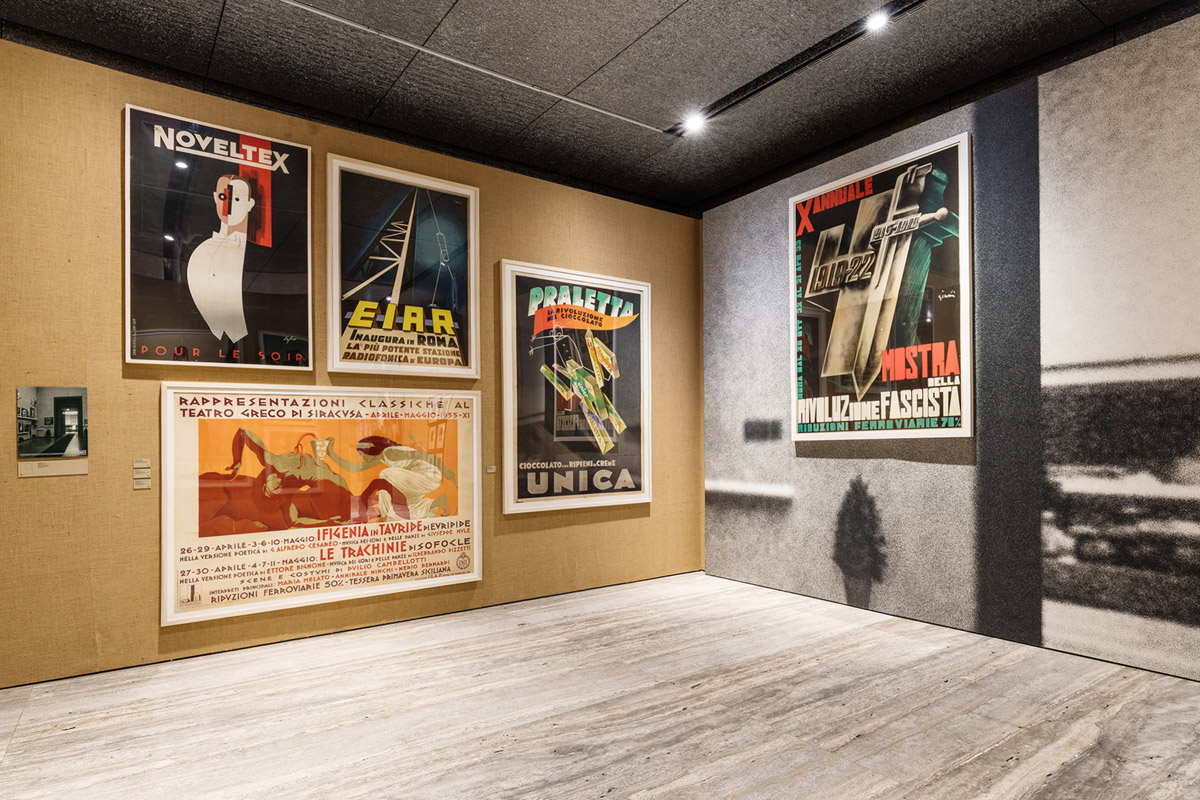
Installation view of ‘Post Zang Tumb Tuuum. Art Life Politics: Italia 1918–1943’ at Fondazione Prada, Milan
Paintings, sculptures, architectural drawings, tapestries and furniture are placed in their original arrangements, while ghostly apparitions printed in greyscale appearin lieu of pieces either destroyed or unobtainable. Collected photographs, letters, exhibition catalogues and newspaper clippings are shown in tandem, illuminating the fascist government’s role in supporting and surveilling the arts in the guise of syndicated exhibitions and prizes.
Opening in 1918 at the close of the First World War, the exhibition’s first reconstruction is the private home of Filippo Tommaso Marinetti, founder of the futurist movement, whose sound-poem Zang Tumb Tumb inspires the show’s onomatopoetic title. Marinetti’s writing glorified the violence of war, what he called ‘the dreamt-of metallisation of the human body’, and spurred on Mussolini’s cause in the form of a cultural counterpoint. The walls are hung with fawning portraits of Marinetti by Růžena Zátková and Fortunato Depero in the brashly colourful style that came to define the movement.

Installation view of ‘Post Zang Tumb Tuuum. Art Life Politics: Italia 1918–1943’ at Fondazione Prada, Milan
From there, the exhibition travels through time. Moving from the 1921 German exhibition ‘Das Junge Italien’ (‘The Young Italian’), featuring a wall of Morandi’s still lifes, to Adolfo Wildt’s room at the 13th Venice Biennale in 1922. The ‘Mostra del Novecento Italiano’, organised by cultural critic — and mistress of Mussolini — Margherita Sarfatti, delves into the cry for a ‘return to order’ in Italian art that endeavoured to erase the avant-garde exploration of the early 20th century. The exhibition, inaugurated by Mussolini in 1923, showcased work by Mario Sironi, Carlo Carrà, Arturo Martini, and more.
Further along, Mussolini’s propaganda machine reaches its zenith in the cathedral-like Deposito, which hosts imagery from the ‘Exhibition of the Fascist Revolution’, held in Rome at the Palazzo delle Esposizioni from 1932-1934. White panels as tall as houses are projected with life-size images in black and white from the event, which four million Italians made their way to the capital to see.
What begins with the futurist movement’s avowed glorification of the act of war finds its logical artistic conclusion in Corrado Cagli’s simple, excruciating line drawings. Cagli, an Italian artist of Jewish descent, became a US citizen during the war in order to join the military, returning to Europe as an American solider. Sketched in oil, the drawings illustrate the horrors of the Buchenwald concentration camp, which Cagli helped liberate in 1945. A chilling but necessary reminder of the ultimate cost of a nation’s descent into the grip of fascism.

Recreation of the USSR Pavilion at the 15th Venice Biennale for ‘Post Zang Tumb Tuuum. Art Life Politics: Italia 1918–1943’ at Fondazione Prada, Milan

Installation view of the Italian futurist exhibition at the USSR Pavilion at the 15th Venice Biennale, 1926. © La Biennale di Venezia, ASAC, Fototeca – serie ‘Attualità e Allestimenti’ – Mostra del FuturismoItaliano, Venezia 1926.

Natura morta, 1920, Giorgio Morandi. and MiBACT – Pinacoteca diBrera, ArchivioFotografico
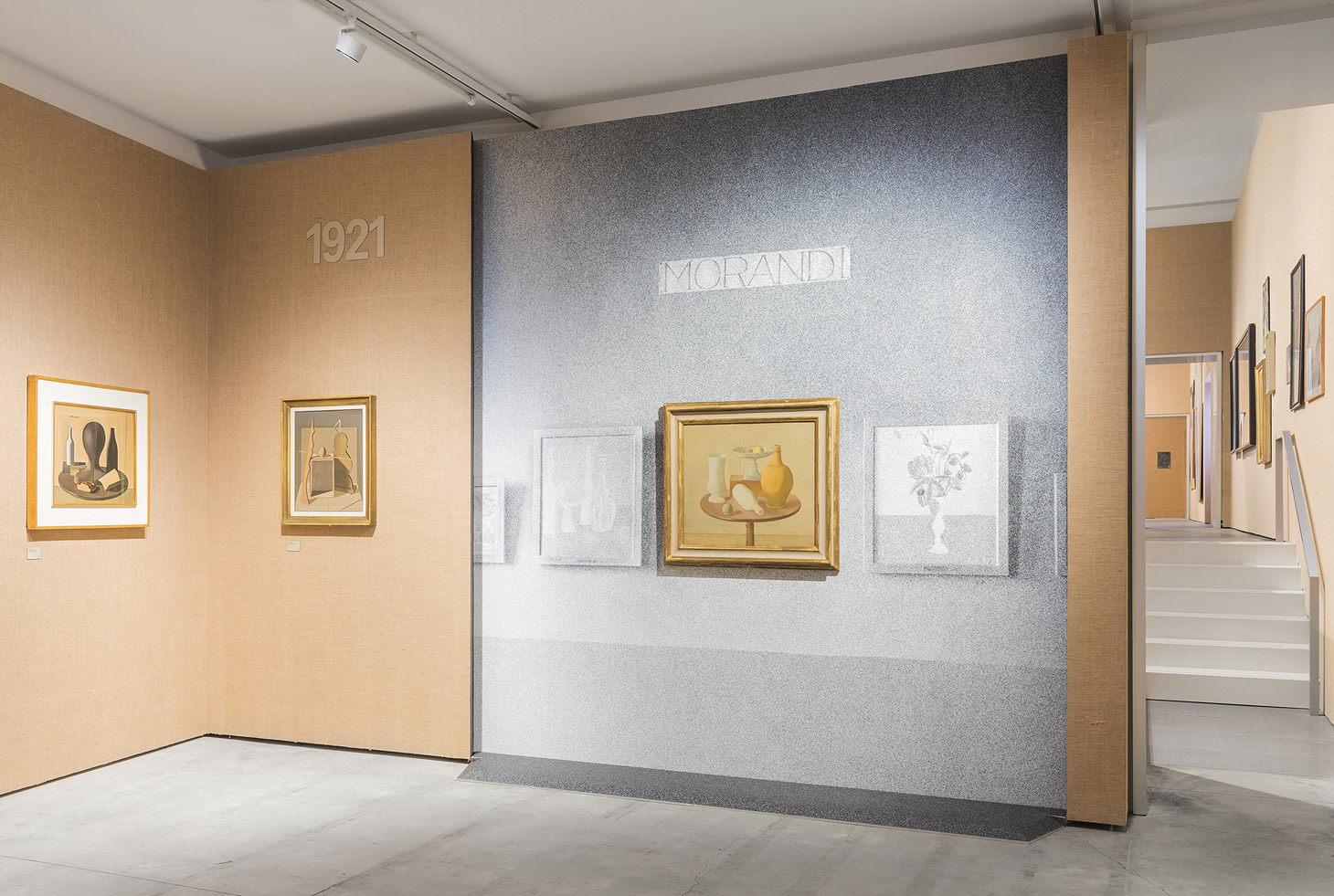
Installation view of ‘Post Zang Tumb Tuuum. Art Life Politics: Italia 1918–1943’ at Fondazione Prada, Milan

Installation view of ‘Post Zang Tumb Tuuum. Art Life Politics: Italia 1918–1943’ at Fondazione Prada, Milan
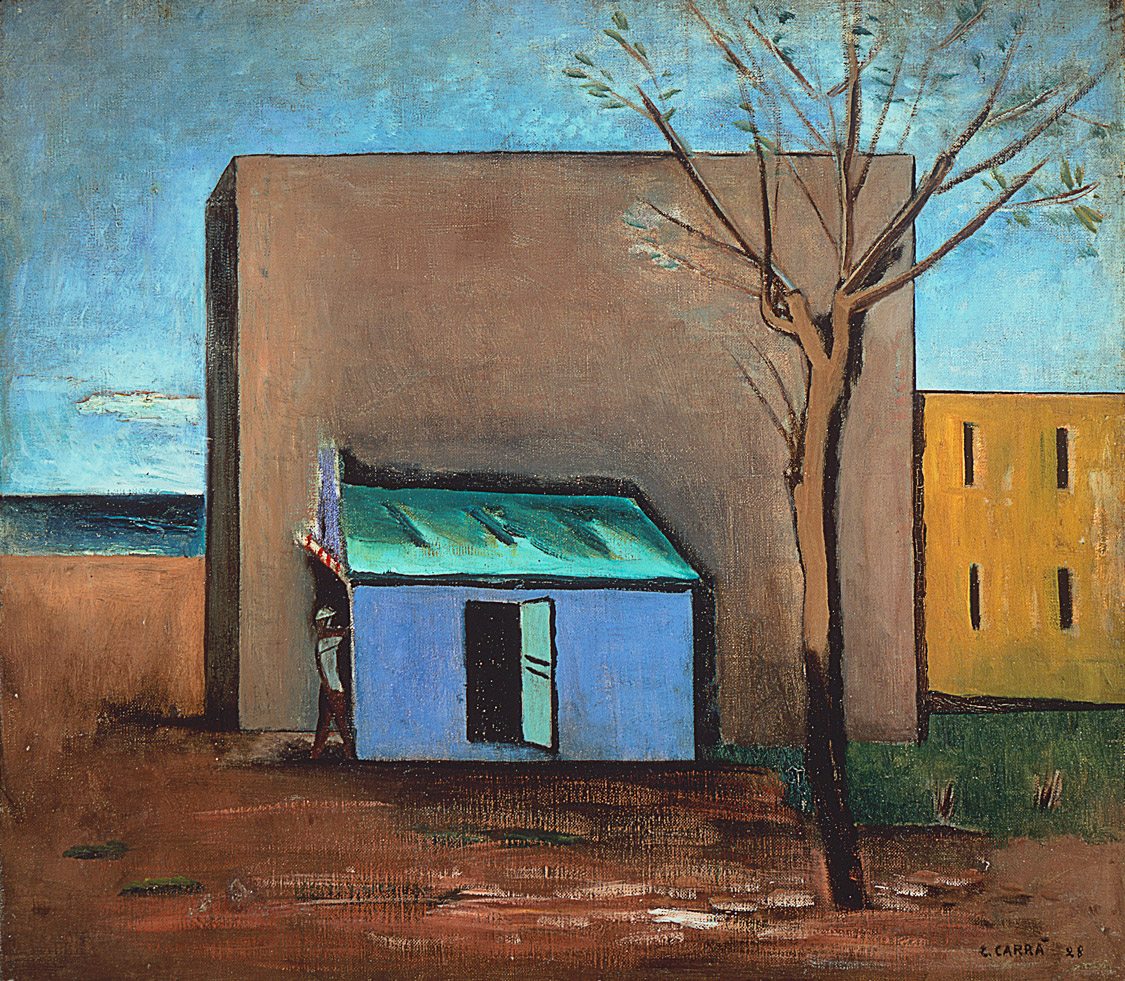
Il bersaglio, 1928, by Carlo Carrà. © Carlo Carrà by SIAE 2018.

Recreation of ‘III Biennale di Roma’, 1925, for ‘Post Zang Tumb Tuuum. Art Life Politics: Italia 1918–1943’ at Fondazione Prada, Milan

Installation view of ‘III Biennale di Roma’,1925, futurist group show curated by FT Marinetti, with works by Giacomo Balla, Fortunato Depero and Gerardo Dottori Among the exhibited pieces: Canaringatti – Gatti futurist, 1923-1924, by Giacomo Balla. Image published in the magazine EMPORIUM.
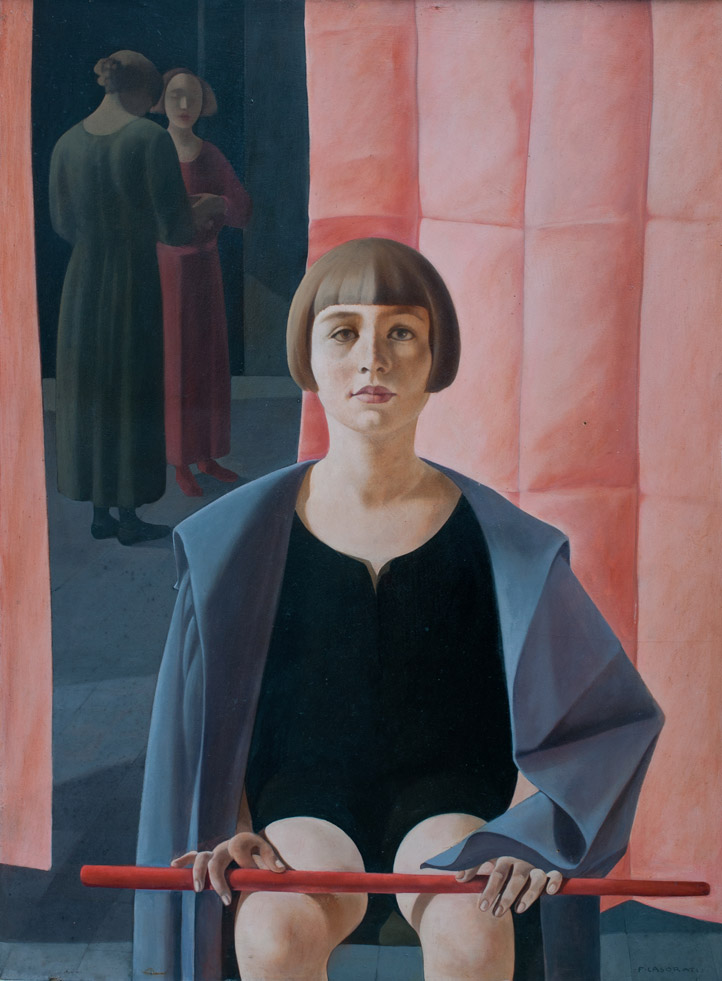
Ritratto di Renato Gualino, 1923-1924, by Felice Casorati.
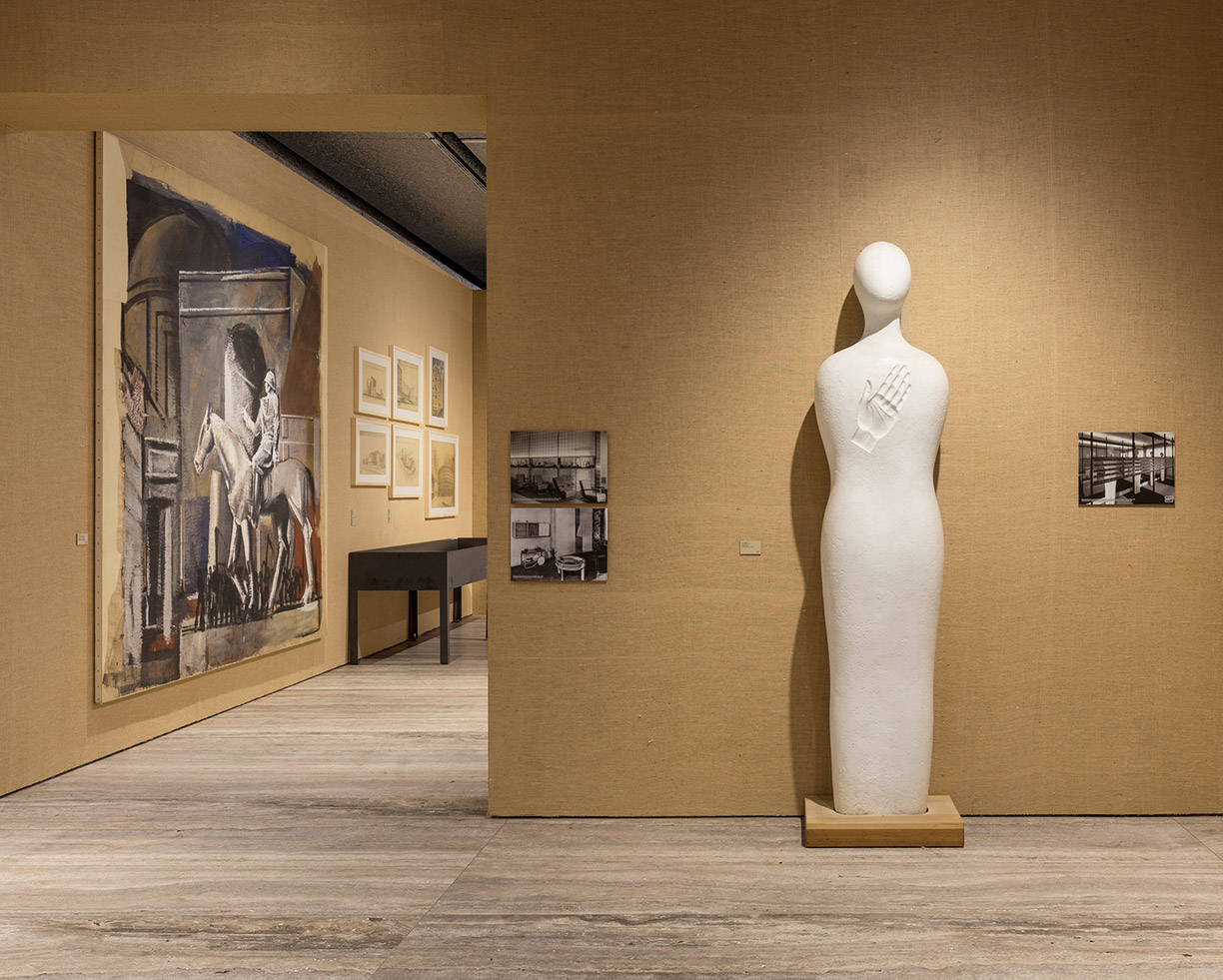
Installation view of ‘Post Zang Tumb Tuuum. Art Life Politics: Italia 1918–1943’ at Fondazione Prada, Milan

Installation view of ‘Post Zang Tumb Tuuum. Art Life Politics: Italia 1918–1943’ at Fondazione Prada, Milan

Pallazo del’Arte (Fondazione Bernocchi), 1933, by Giovanni Muzio, photographic print.

Installation view of ‘Post Zang Tumb Tuuum. Art Life Politics: Italia 1918–1943’ at Fondazione Prada, Milan
INFORMATION
‘Post Zang Tumb Tuuum. Art Life Politics: Italia 1918–1943’ is on view until 25 June. For more information, visit the Fondazione Prada website
ADDRESS
Fondazione Prada
Largo Isarco 2
20139 Milan
Wallpaper* Newsletter
Receive our daily digest of inspiration, escapism and design stories from around the world direct to your inbox.
Laura May Todd, Wallpaper's Milan Editor, based in the city, is a Canadian-born journalist covering design, architecture and style. She regularly contributes to a range of international publications, including T: The New York Times Style Magazine, Architectural Digest, Elle Decor, Azure and Sight Unseen, and is about to publish a book on Italian interiors.
-
 Extreme Cashmere reimagines retail with its new Amsterdam store: ‘You want to take your shoes off and stay’
Extreme Cashmere reimagines retail with its new Amsterdam store: ‘You want to take your shoes off and stay’Wallpaper* takes a tour of Extreme Cashmere’s new Amsterdam store, a space which reflects the label’s famed hospitality and unconventional approach to knitwear
By Jack Moss
-
 Titanium watches are strong, light and enduring: here are some of the best
Titanium watches are strong, light and enduring: here are some of the bestBrands including Bremont, Christopher Ward and Grand Seiko are exploring the possibilities of titanium watches
By Chris Hall
-
 Warp Records announces its first event in over a decade at the Barbican
Warp Records announces its first event in over a decade at the Barbican‘A Warp Happening,' landing 14 June, is guaranteed to be an epic day out
By Tianna Williams
-
 ‘Humour is foundational’: artist Ella Kruglyanskaya on painting as a ‘highly questionable’ pursuit
‘Humour is foundational’: artist Ella Kruglyanskaya on painting as a ‘highly questionable’ pursuitElla Kruglyanskaya’s exhibition, ‘Shadows’ at Thomas Dane Gallery, is the first in a series of three this year, with openings in Basel and New York to follow
By Hannah Silver
-
 25 artists reimagine the teapot at Milan Design Week 2025
25 artists reimagine the teapot at Milan Design Week 2025Come to Loewe’s cross-cultural tea party: pots of fun in Milan as artists, designers and architects celebrate the universal comfort of tea
By Hannah Silver
-
 Inside the unexpected collaboration between Marni’s Francesco Risso and artists Slawn and Soldier
Inside the unexpected collaboration between Marni’s Francesco Risso and artists Slawn and SoldierNew exhibition ‘The Pink Sun’ will take place at Francesco Risso’s palazzo in Milan in collaboration with Saatchi Yates, opening after the Marni show today, 26 February
By Hannah Silver
-
 The creative mind at work: a century of storyboarding at Fondazione Prada
The creative mind at work: a century of storyboarding at Fondazione PradaFondazione Prada’s 'Osservatorio, A Kind of Language: Storyboards and Other Renderings' features some of the most celebrated names in cinema working from the late 1920s up to 2024
By Mary Cleary
-
 Tasneem Sarkez's heady mix of kitsch, Arabic and Americana hits London
Tasneem Sarkez's heady mix of kitsch, Arabic and Americana hits LondonArtist Tasneem Sarkez draws on an eclectic range of references for her debut solo show, 'White-Knuckle' at Rose Easton
By Zoe Whitfield
-
 What makes fashion and art such good bedfellows?
What makes fashion and art such good bedfellows?There has always been a symbiosis between fashion and the art world. Here, we look at what makes the relationship such a successful one
By Amah-Rose Abrams
-
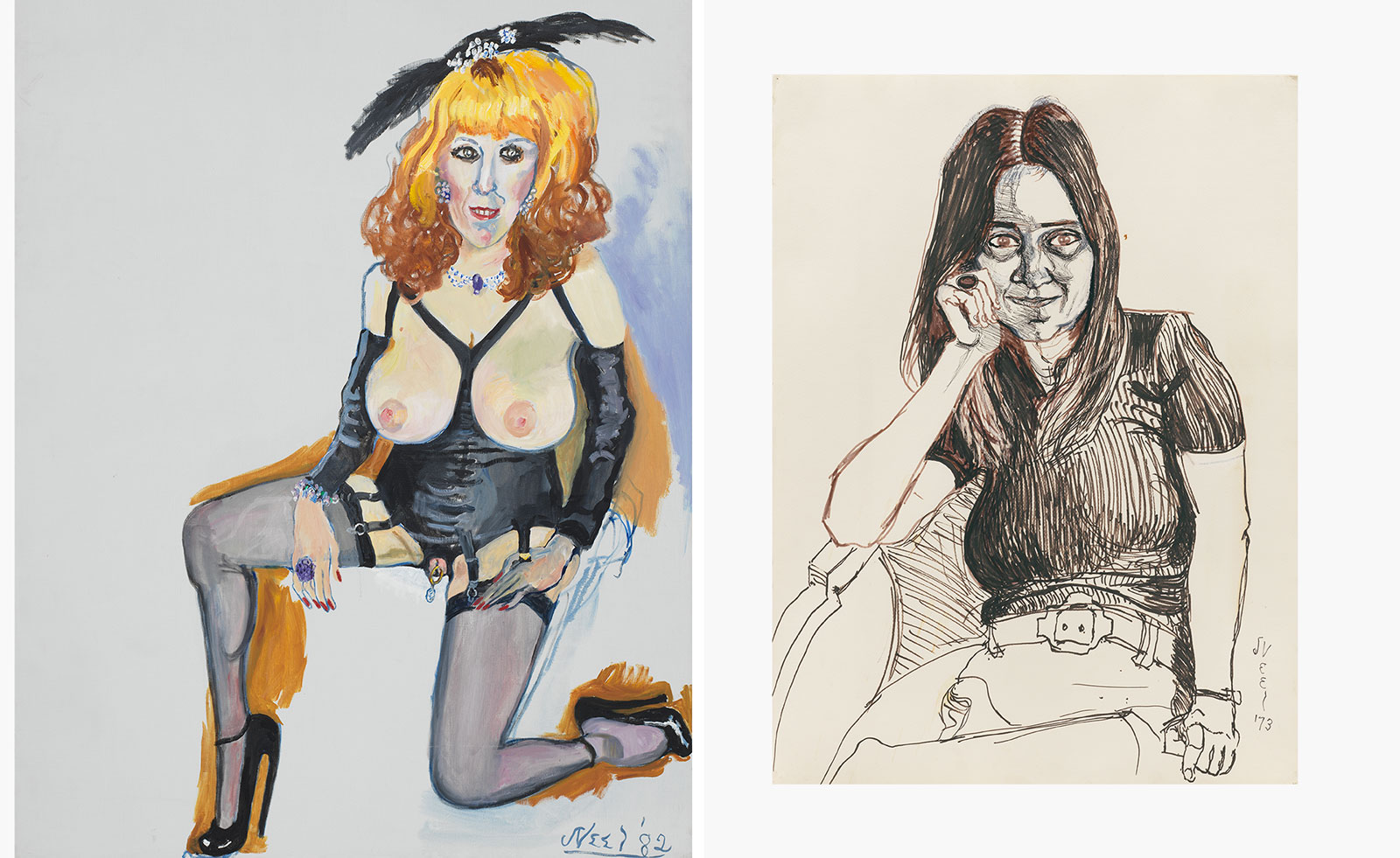 Alice Neel’s portraits celebrating the queer world are exhibited in London
Alice Neel’s portraits celebrating the queer world are exhibited in London‘At Home: Alice Neel in the Queer World’, curated by Hilton Als, opens at Victoria Miro, London
By Hannah Silver
-
 ‘You have to face death to feel alive’: Dark fairytales come to life in London exhibition
‘You have to face death to feel alive’: Dark fairytales come to life in London exhibitionDaniel Malarkey, the curator of ‘Last Night I Dreamt of Manderley’ at London’s Alison Jacques gallery, celebrates the fantastical
By Phin Jennings